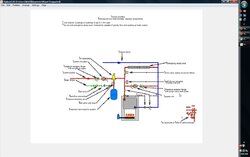The wife is about to bury her boot in my backside if I don't get this Econoburn hooked up and running in the next couple weeks.
I'm planning on doing the install myself but I only have half a clue and rereading the manual just makes it worse.
I'd appreciate if someone could provide me with a grocery list of the off the shelf black piping and other near boiler stuff I need to get it to the pex undie ground. Please include lengths and dimensions as me wife often tells me "you is an idiot" Detailed pics. would help even more!
Thanks a chunk!
I'm planning on doing the install myself but I only have half a clue and rereading the manual just makes it worse.
I'd appreciate if someone could provide me with a grocery list of the off the shelf black piping and other near boiler stuff I need to get it to the pex undie ground. Please include lengths and dimensions as me wife often tells me "you is an idiot" Detailed pics. would help even more!
Thanks a chunk!




